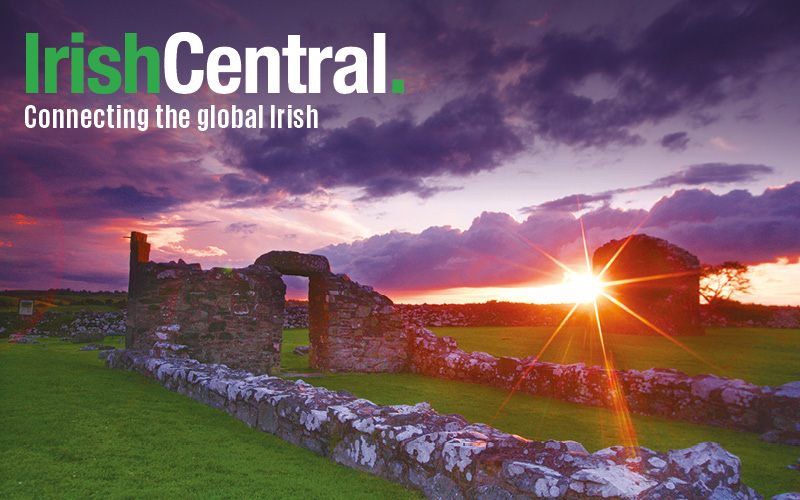"In Compassionate Stranger, Asenath Nicholson and the Great Irish Famine," celebrated historian Maureen O’Rourke Murphy introduces us to the delightfully fanatical Asenath Nicholson, a 19th century American journalist and philanthropist who recorded how the Irish lived before and during the Great Irish Hunger. Cahir O'Doherty talks to Murphy about the landmark work of Irish studies scholarship, five decades in the making, an act of reclamation that celebrates Nicholson’s compassion and her extraordinary legacy.
You can count on one hand the number of 19th century visitors to Ireland who recorded the calamity of the Great Hunger without filtering it through a distorting sectarian or providentialist prism.
Asenath Nicholson, an American journalist, was one of the very few who simply recorded what she saw in human terms. Her first visit to Ireland in 1844 was inspired by an altruistic and entirely familiar 19th century objective: “to personally investigate the condition of the Irish poor.”
But being the daughter of New England Puritans and a religious woman of her era, she had another objective too: to distribute Bibles and tracts to Irish Catholics.
In both of these aims she was unremarkable, but it’s the records she left us of her extensive travels through pre-Famine and Famine Ireland that make her a historic witness of the first rank.
“She was a deeply devout Christian and she was focused on what she could do to relieve suffering,” says Maureen O’Rourke Murphy, author of the new book about Nicholson called "Compassionate Stranger, Asenath Nicholson and the Great Irish Famine" (Syracuse University Press).
“She concentrates on what she can do to help and she often despairs that she can’t do more.”
In the process Nicholson wrote unforgettable accounts of what she found, and her on-the-ground reports have a cinematic urgency that leap to life in front of your eyes.
Often what she sees is chilling. “She goes to the island of Arranmore off the coast of Donegal and she sees all these fat, sleek-looking dogs running around,” says Murphy, a professor of Irish studies at Hofstra University on Long Island and winner of one of the Irish government’s 2015 Presidential Distinguished Service Awards for her years of work on Irish causes.
“She says to the boatman, ‘I don’t see any signs of hunger here.’ At this the boatman turns to his companion and asks in Irish if he she should tell her? Watching him she instantly realizes the truth. The dogs have been eating the dead.”
Although Nicholson was sincere in her faith, she was at all times an even-handed and non-sectarian observer, a rarity for the period and the reason why her accounts of her two visits to Ireland are so riveting now.
As Murphy makes clear in her book, Nicholson was far from a passive observer of the things she witnessed, too. She was critical of the British government, the largely absentee Anglo Irish landlords, the conspicuously well-fed clergymen, the disinterested Dublin gentry, and even of relief officials.
Unlike senior British cabinet members, she did not believe that providence was punishing the Irish for their own laziness or moral inferiority. On the contrary, she believed the disaster was man made.
Nicholson first arrived in Ireland 17 months before the outbreak of the Great Hunger. “But when she writes about Ireland to The New York Tribune and elsewhere she always has to be careful that it doesn’t sound like a jeremiad, and I think she handles that very well. She simply tells us what she sees,” says Murphy.
People everywhere are always talking about the Irish begging, Nicholson complains. But they don’t want to avoid work: they want work, she insists.
She also talks about the tremendous kindness and generosity she encounters from the Irish and the fact that her own people (Anglo Irish, Protestants, the gentry) are more likely to turn her out for her challenging views.
“Even though she is critical of Catholicism, her best friend turns out to be Catholic reformer Theobald Mathew the Apostle of Temperence. Democracy always trumps religion for her,” says Murphy.
The year before the start of Famine in 1844 the native Irish invited Nicholson to country dances, which she records faithfully. She also remarks that even then many family members were already forced to leave the country for economic reasons.
Those kinds of insights, and generous quotations from Nicholson’s own work, explain the revelatory power of Murphy’s book. It answers every question you might have about conditions on the ground during the Irish Famine. All the contributing factors are listed: the toxic sectarianism, the social distinctions, the prevailing attitudes. Murphy’s book and Nicholson’s words together offer a rare and total immersion in the era.
The starving men Nicholson saw working the roads toiled for a week without pay finally received seven and sixpence as their meager reward, from which they then had to pay rent to the landlords to live in their own country, and feed six or eight of a family (large Catholic families contributed to their own destitution).
Since this is pre-Famine and Famine Ireland, most of the Irish Nicholson encounters are Irish-speaking. Nevertheless, they make every effort to make her welcome.
“Do you ask who are the greatest sufferers?” Nicholson writes to her readers in New York.
“The Roman Catholics, and they bear this grievous burden with the most unheard of patience. Not one single reproach have I ever heard, from priest or peasant, upon the proud Protestant, though I mingled with them in every condition.
“And what is quite remarkable, not a word of reproach or fretfulness falls from their lips. They suffer in patience and die in silence.”
Read more: The Irish carry the dark echoes of the Great Hunger
All the while Nicholson moves between the Catholics who have been told by their priests to be very careful of Bible toting strangers, and the Protestants who are deeply suspicious of her broad democratic principles, says Murphy. She exists in a power vacuum between the two groups.
“In the travel accounts written by most men of the period they rarely get off their coaches,” says Murphy. They see people swarming toward them to beg and they immediately assume it’s the result of their deficient characters.
“The men walk past all the ramshackle houses lamenting their deplorable conditions, but Nicholson is the one who goes in and sits in them with a potato in her hand and a mug of water. She knows these places and they are not the other. You don’t get a sense that of otherness.”
Even before the outbreak of famine Nicholson is aware of the dangerous food security and she writes about it. People live just on the brink, she writes. They can deal with a hungry season but not two hungry years and she sees how fragile they are.
“Nicholson can’t save everyone, she realizes. At one point she’s working in the Liberties in Dublin and she dedicates herself to teaching the local families there how to prepare Indian meal and feed themselves. She helps one of the daughters get sowing work, she starts where she can.”
When teaching her students at Hofstra University about the dreadful conditions the Famine Irish faced, Murphy has developed some techniques that Nicholson would likely approve of. The first thing she does is to give her students some real insight into the consequences of food scarcity.
“We talk about hunger out on Long Island, which they generally have no idea about. Last year I asked if they would be willing to live on a food stamps allocation for a week with me? By the end of the weekend I asked one student what he was living in and he said oatmeal and ground turkey. This is the world that lots of people occupy.”
Nicholson also tried to educate people about the Irish poor and their needs.
“She was reminding people all the time that these are real people suffering. They aren’t other. They’re us,” Murphy says.
To read Murphy’s book is to follow Nicholson around Ireland as she takes in the sheer scale of the unfolding disaster, even as Murphy celebrates the rare compassion that drove Nicholson herself on. Anyone who cares about Irish history will find this profoundly illuminating book indispensible.
Read more: Some Irish worse than British in the Famine




Comments